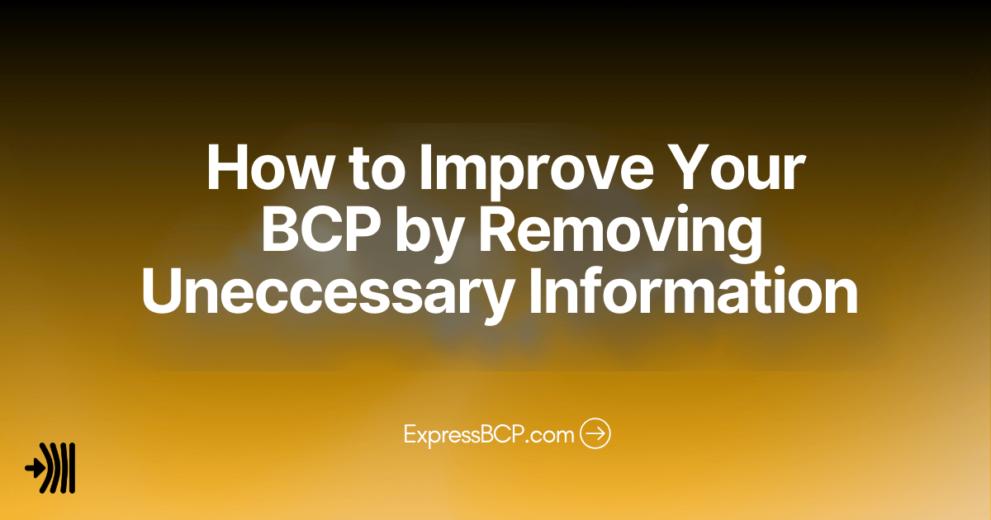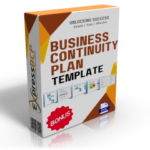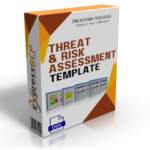They say less is more, and when it comes to your business continuity plan (BCP), this couldn’t be truer.
Many business leaders find that overly complex continuity plans often fail when put to the test. The reality is that during a crisis, simplicity and clarity are what truly drive effective action. Keep your BCP lean, and it’s far more likely to succeed when it matters most.
Think about that! The very thing designed to save your business could crumble because it’s stuffed with irrelevant details.
We often fall into the trap of thinking more is better—more data, more processes, more contingencies. But I’ll let you in on a secret: what you leave out of your business continuity plan is just as critical, if not more, than what you pack in. It’s tempting to cover every scenario under the sun, but a bloated plan can quickly become unusable when disaster strikes. Trust me, no one has time to sift through 200 pages during a crisis.
In this post, we’ll explore the art of trimming the fat from your business continuity plan. We’ll discuss what you should consider removing, why simplicity is the key to resilience, and how you can streamline your plan to be effective, not exhaustive. Ready? Let’s cut to the chase.
Why Complexity Is Your Enemy
Here’s the thing—when you’re in the middle of a crisis, time is your most valuable resource. A bloated plan full of unnecessary jargon, minor risks, and complicated protocols can slow you down when you need to act fast.
Let’s say you’ve added ten different recovery procedures for every department. Great in theory, right? But when a real incident hits, your team needs clarity, not a maze. A dense, overly detailed plan can lead to confusion, delays, and even missed steps.
Action Step: Focus on the most critical and important processes that will keep your business running. Remove anything that doesn’t directly contribute to your immediate recovery efforts.
Cut the Fluff out of Your BCP, Keep the Essentials
A common mistake in BCPs is trying to account for every possible risk under the sun. Cyber-attacks, earthquakes, supply chain disruptions, alien invasions—you name it, someone’s planned for it. But that’s the wrong approach. Not only is it unrealistic, but it also dilutes the focus on actual, high-probability risks that will impact your operations.
The solution? Remove low-impact, low-likelihood risks from your plan. Streamlining your focus on real, tangible threats makes the plan more actionable and easier to implement. Don’t plan for the apocalypse. Plan for what is statistically probable or plausible.
Action Step: Review your risk assessments and remove scenarios that are either extremely unlikely or have a negligible impact on your business. Focus on the top 5–10 risks that could bring your business to a standstill.
Remove Redundant Information in Your BCP
Redundancy is another culprit that can bloat your business continuity plan. While it’s good to have backups in your operations, your BCP isn’t the place for endless repetition. Repeated steps, duplicated processes across different departments, or multiple copies of the same policy can confuse your team when speed and clarity are crucial.
Instead, create a streamlined structure where information is easy to find and follow. Think of it as creating a clean, organized toolkit that everyone can use without having to dig through unnecessary items.
Action Step: Audit your BCP for repetitive steps and redundant information. Create clear, concise instructions that are easy to follow. Cross-reference where needed but avoid overloading each section with the same information.
The Power of Simplicity
Simplicity isn’t about cutting corners; it’s about being laser-focused on what matters most. When your business continuity plan is simple, it’s not only easier to implement, but it’s also more likely to succeed.
Think about the difference between a 50-page manual and a 5-page checklist. Which one do you think your team will use during an actual emergency? A short, well-thought-out plan beats a novel every time. Your team needs quick answers and actionable steps, not an encyclopedia.
Action Step: If your plan is longer than 25 pages, it’s probably too long. Try reducing it to the essentials—what your team needs to know to keep the business running in an emergency.
Keep Your BCP Up-to-Date, Not Overloaded
Here’s another trap many businesses fall into: thinking that adding more content to their BCP each year makes it better. Spoiler alert—it doesn’t. Updating your plan regularly is crucial, but that doesn’t mean adding layers of complexity. Overloading your plan with new procedures and information can make it harder to navigate and implement.
A better approach is to review and refine your plan consistently. Remove outdated steps, cut irrelevant risks, and simplify wherever possible. Your BCP should evolve with your business, but it should stay lean.
Action Step: Schedule regular reviews of your business continuity plan—at least annually. During these reviews, find what can be removed or simplified to keep your plan lean and effective.
Make It Usable—Not Just Comprehensive
Your BCP isn’t a box-ticking exercise—it’s a survival tool. And tools need to be usable. So as you refine your plan, ask yourself: Can my team follow this during a crisis? The best BCPs are intuitive, concise, and designed with real-world implementation in mind. If your plan reads more like a thesis than a guide, it’s time to strip it down.
Action Step: Test your BCP with a tabletop exercise. If your team struggles to follow the plan or can’t find critical information quickly, it’s time to cut out the excess and make it user-friendly.
To Sum Up: Leaner Business Continuity Plans Lead to Better Outcomes
When it comes to improving your business continuity plan, less really is more. Cutting out unnecessary complexity, low-priority risks, and redundant information doesn’t weaken your plan—it makes it stronger, clearer, and more likely to succeed when it’s needed most.
By focusing on what truly matters, you’ll build a lean, effective BCP that helps your team respond quickly and decisively. And in a crisis, that’s exactly what you need. So, take a scalpel to your business continuity plan today and see how much better it performs tomorrow.
Looking for a business continuity plan that’s already streamlined and ready to go?
Check out our Business Continuity Plan Template (ExpressBCP). Our templates are designed to be lean, effective, and easy to implement, so you won’t waste time on unnecessary details. Get exactly what you need to protect your business—nothing more, nothing less. Take the guesswork out of BCP planning and start building your resilient future today!







